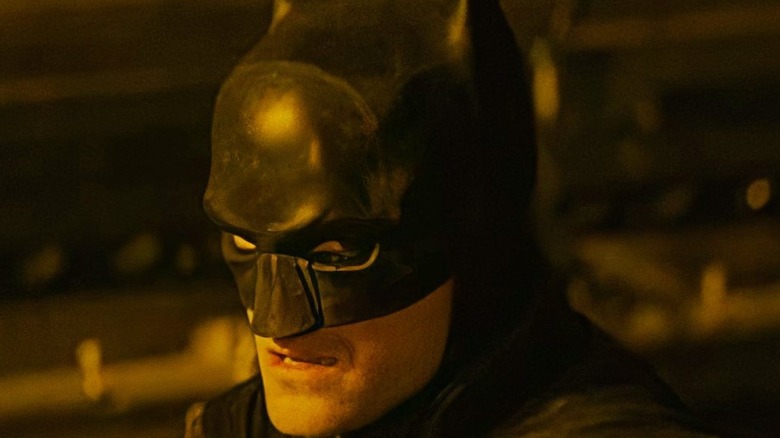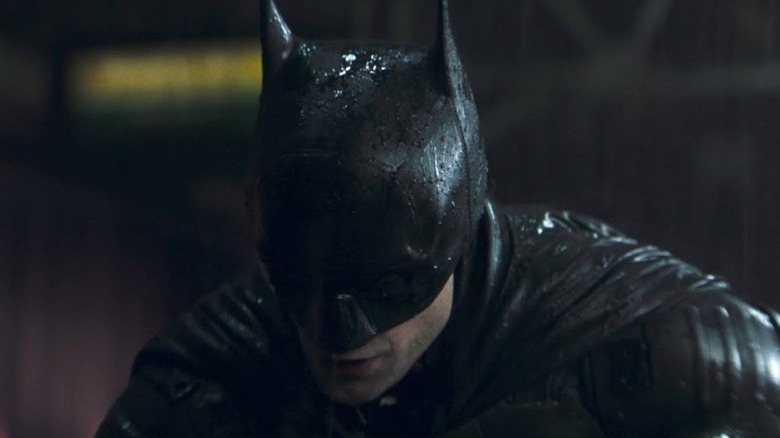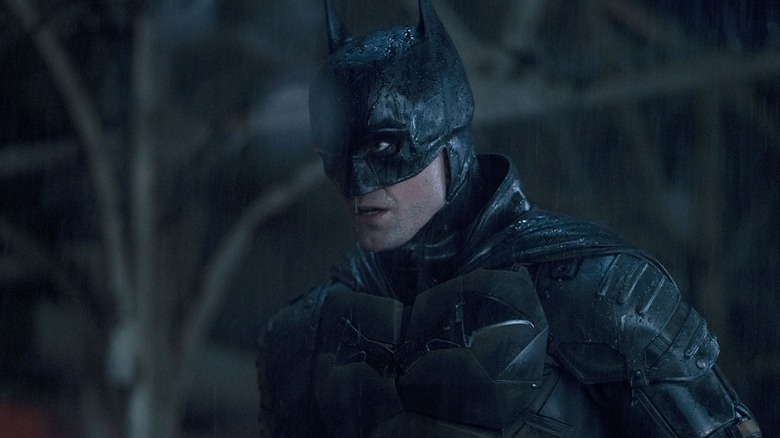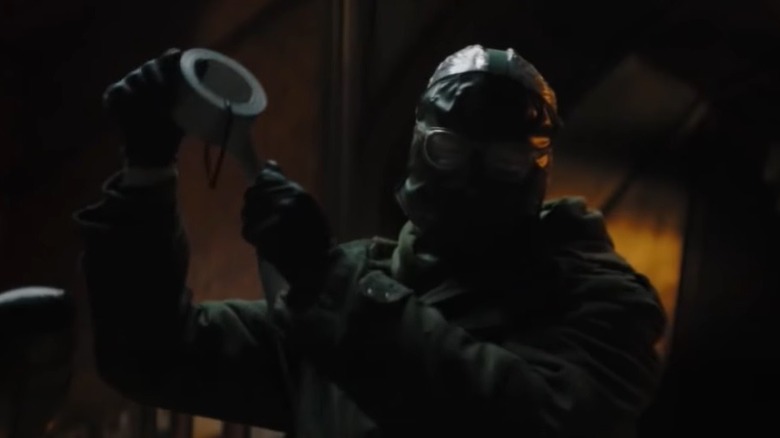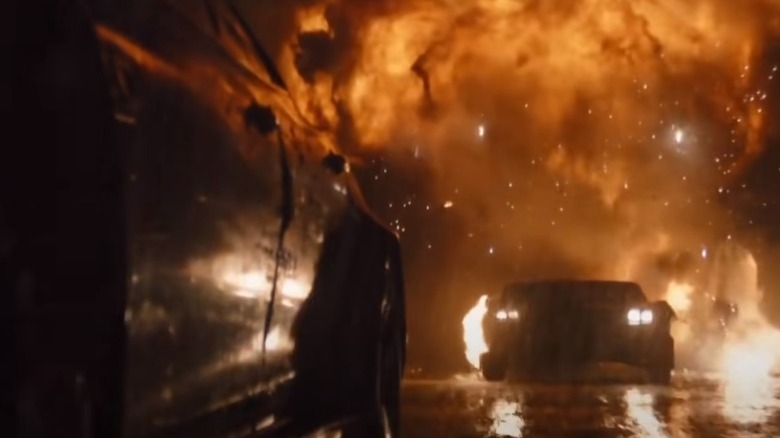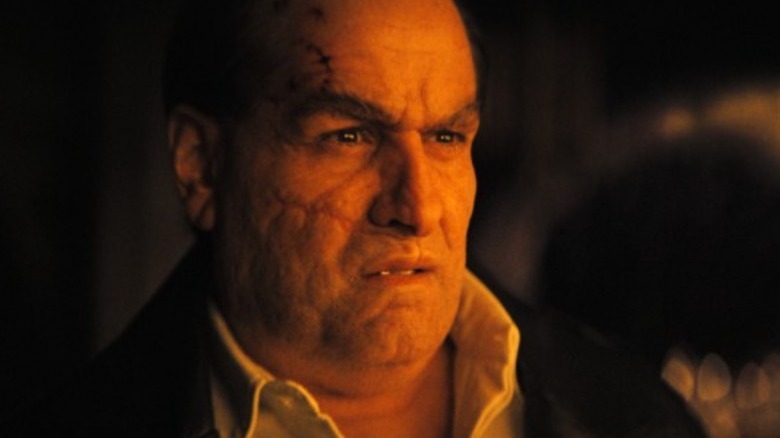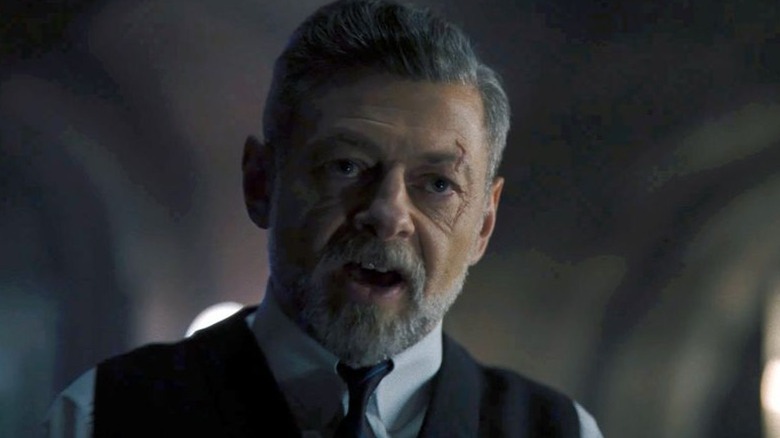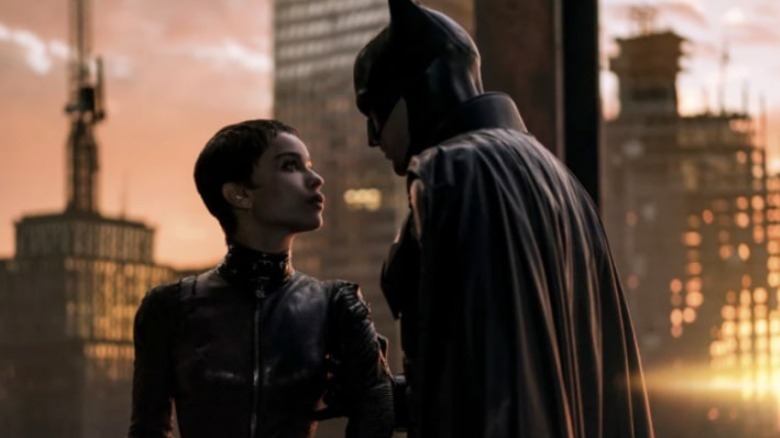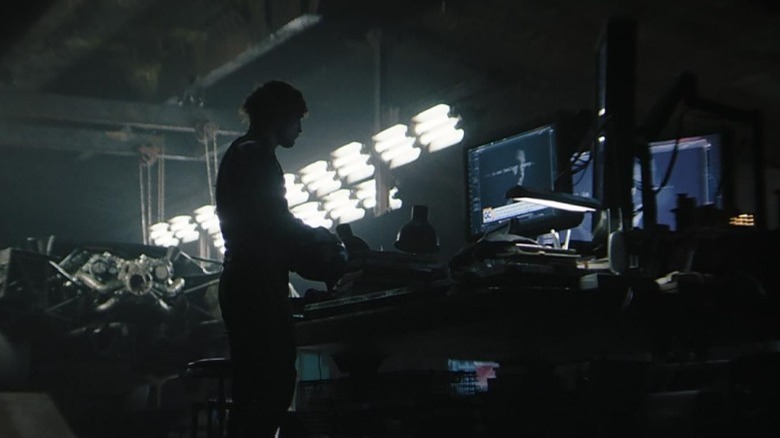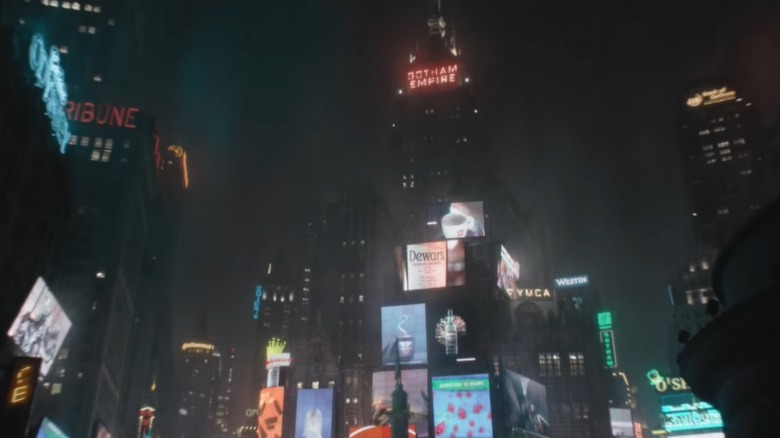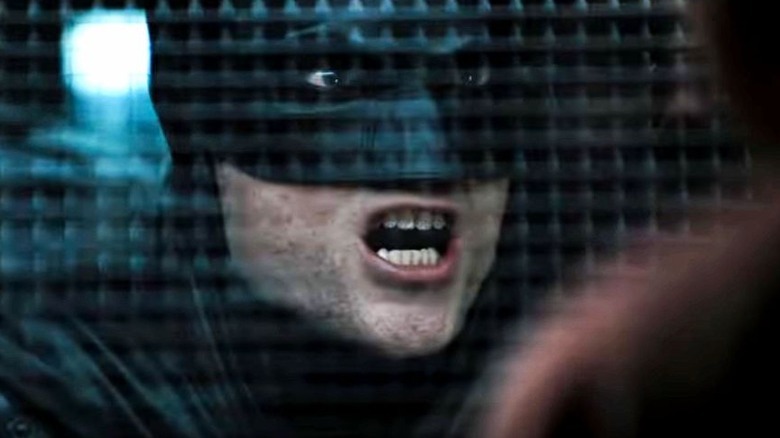The Best And Worst Things In The Batman
Batman is a force to be reckoned with once again on the silver screen. Director Matt Reeves has now entered the world of the Dark Knight and brought fans his vision of a tortured vigilante seeking justice. "The Batman" is layered with contemplative themes, political subtext, and character-driven exposition –- a potent concoction that won't soon be forgotten.
The Dark Knight embarks on a crusade initially underscored by his simple desire for vengeance against the criminal underbelly of Gotham. This is a Batman who's felt scorned by his own personal tragedy, and he has a bone to pick with anyone who dares to break the law. This all becomes too apparent when he viciously pummels criminals in a flash of bone-crunching brutality. However, the Riddler takes Batman on a twisted journey of introspection and discovery by laying the bodies of corrupt city officials at the Dark knight's feet. Once Selina Kyle enters Batman's world, he's forced to recognize the despair victims feel at the hands of the wicked. Between the Riddler's campaign and an alliance with Catwoman, Batman begins to evolve when he realizes that his crusade should also offer hope to the citizens of Gotham.
"The Batman" is a beautifully shot film with a distinct score that expertly creates an unforgettable new brand for the Caped Crusader. While the narrative is thrilling, there are questionable moments throughout the film's plot that might leave viewers scratching their heads. Despite some shortcomings, there are many exhilarating highlights that outweigh the bad. Let's take a look at several of the best (and worst) moments in "The Batman."
Best: Combat
Batman is known for his combat prowess. In most iterations of the character, he's traveled the world and learned countless methods of hand-to-hand combat and all forms of martial arts. In "The Batman," he's seemingly acquired most of his talent from Alfred, a man we learn little about in Matt Reeves' version of this world. Regardless, Batman doesn't disappoint as he dismantles the criminal element piece by piece using almost nothing but his fists.
The opening sequence, where we see the Dark Knight approach a gang whose painted faces are apparently inspired by the Joker, is the first introduction we have to the hero's capabilities on the ground. The cocky leader taunts and assaults a costumed man he clearly doesn't understand and quickly learns a lesson the hard way. Batman's attack is swift and merciless. If the sounds of brutality are any indication, this thug will likely be eating through a straw for a while.
At the other end of the film, when the Riddler enacts his plan to flood Gotham, we once again witness Batman's talent for dishing out pain as he takes on several of Riddler's followers — all of whom are armed to the teeth. Batman's armor deflects bullets while he expertly moves from person to person, putting each out of commission. The fight choreography is tight and exciting to watch throughout the film.
Worst: Batman's impenetrable armor
Make no mistake, the Batman costume looks great, and Robert Pattinson wears the new Batsuit well. Beyond aesthetics, however, there's an unexplained durability to the suit that becomes rather apparent in the film. Sure, Batman is going to develop an armor that can withstand some gunfire. That's a given. But how about armor that can withstand a barrage of gunfire? Throughout the film, Batman is shot directly countless times and is typically no worse for wear. In the third act, he takes several hits from automatic weapons, a shotgun blast to the chest, and even high-caliber rounds from hostile snipers to almost no effect.
In the middle of "The Batman," our hero finds himself in the police precinct after being rendered unconscious by the Riddler's explosive execution of D.A. Gil Colson. This means that, aside from gunfire, he's also taken the full force of a bomb explosion up close. Then, when he escapes the entire police force, he glides away from danger in his wingsuit. However, he doesn't quite nail the landing, and instead, his parachute is caught on a bridge, smashing the hero into a moving vehicle and the concrete. While he does hobble away in pain, he recovers rather quickly to continue his vigilante work, which seems to indicate that he didn't suffer too greatly. For all intents and purposes, this armor seems a little too magical.
Best: Horror imagery
The Riddler is a frightening foe, at least in Matt Reeves' version of the character. Batman is known for maintaining a coterie of supervillains who are mostly insane or mentally unstable. The Joker typically might win in the "creep" factor department. However, the Riddler operates like an absolute nightmare. If we didn't know any better, the opening scene alone, where the Riddler stalks the mayor before bludgeoning him to death, might indicate that we're watching a slasher horror film.
Aside from the Riddler's murderous methods, he seems to enjoy savoring his kills. He stands in the shadows for quite some time watching the mayor pacing only a few feet from him while watching the news coverage of his campaign for reelection. Later, the Riddler provides the media with footage of him killing the current police commissioner using a Jigsaw-like trap in which rats are guided through a maze and ultimately forced to attack the commissioner's face to escape. It's a dark and macabre setting for a villain who's completely unhinged and ready to do anything to achieve his goals.
The horror elements of this film are jarring and unforgettable. Paul Dano's performance of the character continues to deliver terror even after he is unmasked and sitting behind hardened glass opposite of Batman. His erratic yelling and pervasive tics all tell a story. We know that the Riddler had a horrible childhood, and his current state only compliments that history.
Worst: The multi-car highway pile-up
One of the film's most intense moments is when Batman gives chase to the Penguin, or Oz, as he introduces himself as in this film, believing him to the rat spoken of by the Riddler. The monstrous Batmobile roars onto the scene letting the Penguin know there's no escape. Despite the reality of an angry Batman burning rubber in a jacked hot-rod with a steel frame, the Penguin still attempts to shake his pursuer the only way he knows how — by diving head-first into oncoming traffic on the freeway.
Eventually, the Penguin causes a massive pile-up that includes a semi-truck likely carrying liquid fuel. The fiery collision leads to an explosion in which the Penguin seems to have either lost the Batman or killed him. As he speeds away, however, the Batmobile comes streaking wildly out of the fire and pummels the Penguin's vehicle, sending him tumbling across the interstate. Batman and Jim Gordon then interrogate the Penguin before abandoning him for another lead.
While the massive destruction on the interstate is pulse-pounding, it's quickly forgotten by the film's characters. Sure, Batman didn't cause the destruction, and yes, this film is focused on a Batman fighting out of hate, not hope. As such, it makes sense that the Penguin would be all he is concerned about instead of helping the innocents among the wreckage. However, the Penguin receives no consequences for those actions, and squeaky-clean police lieutenant Jim Gordon seems undeterred by it as well. The pile-up was simply an explosive action sequence without any real effect. It's also a bit of a head-scratcher.
Best: The Penguin
"The Batman" is an engaging, character-heavy story. The film is anchored by a talented cast who capably take on their roles. Oz is one such character that is brilliantly realized from head to toe. While he's not known as the Penguin yet, he is destined to adopt the moniker in the future. Colin Farrell remarkably disappears into the role without a trace — only the Penguin exists. Make-up and prosthetics ensure that we never recognize the actor, even if we know he is somewhere underneath that rough exterior. Farrell perfects his performance by depicting a wildly believable and captivating mobster who cares very little about anyone but himself.
Batman confronts the Penguin on two separate occasions. The first time is more of an amicable meeting as Batman attempts to find any information linking the mayor to organized crime and the cesspool of individuals that occupy the Iceberg Lounge. Penguin sarcastically humors the Dark Knight. Later, Batman pursues the Penguin after learning that he may have been the man who ratted on Sal Maroni's illicit business operations.
However, the Penguin isn't the man the Caped Crusader is looking for. In the interrogation, the Penguin establishes himself as a bullish yet witty individual who will do anything to survive. After all, the Penguin is a survivor and even outlasted Carmine Falcone and will soon secure power for himself — there's no doubt about that. While he doesn't get a ton of screen time, the Penguin is absolutely magnetic every time he appears on camera.
Worst: Alfred's relationship with Bruce
Bruce Wayne has a notably tragic history in the world of comic books. The moment of his parents' deaths has been depicted across countless mediums. We also know that those events lead Alfred to become Bruce's surrogate family, in essence. Typically positioned as a faithful servant of the Wayne family, Alfred stands by Bruce through thick and thin. This film even establishes that he likely taught Bruce how to fight, which means that Alfred is one tough cookie. He even hints at the idea that he may have been more of a bodyguard to the Waynes than just a simple servant when he tells Bruce that he was supposed to protect Thomas and Martha.
Whatever the case may be, there's certainly a history between the two that's begging to be explored. However, the film doesn't really touch on the relationship between the two in any meaningful way. Sure, Alfred helps Bruce crack Riddler's ciphers. He even takes the full force of a bomb for Bruce and is hospitalized as a result. But when Bruce finally tells Alfred that he fears losing someone he cares about, it doesn't exactly feel earned given the lack of interaction between the two. Surely, they have a relationship, but within the confines of this world, the audience has no context of that connection to draw from when it matters most.
Best: Everything about Selina Kyle
Despite Batman's penchant for working alone, he's going to need allies beyond Alfred. There are times when he needs individuals he can trust on the ground. Selina Kyle fills that role in "The Batman," and Zoë Kravitz completely slays in her performance as the famous cat-burglar.
As a character, she's far more multi-dimensional than the always angry Batman is at the start of the film. Selina is compassionate, fiercely loyal to her friends, and extremely deadly in the right situations. When Batman first catches her off guard while breaking into a safe, she trades blows with the Dark Knight in a moment that had bat-nerds everywhere quaking in their underoos with excitement. Together, the Bat and the Cat have magnetic chemistry, and Selina certainly takes charge of that connection.
When the big revelation drops that Carmine Falcone is Selina's father and that she's gunning for him, a new side to the character is unveiled. Selina doesn't play around, and regardless of any blood relation, messing with her friends might earn you a bullet -– or at the very least a few cat-scratches to the face. Catwoman has always been a conflicted figure who often balances her penchant for thievery with her respect for Batman. Kravitz's portrayal is, possibly, the most accurate live-action depiction of the character yet.
Worst: The subway cave
This one might be a matter of preference, but Batman's legacy is long associated with his famous Batcave, where all the toys and equipment reside. He typically also keeps his suits and important keepsakes from prominent investigations on display here. And, of course, there's the Bat-computer. "The Batman" does away with the ideas of Wayne Manor and a cave beneath its foundation. Instead, Bruce Wayne lives in a skyscraper, and his Batcave appears to be an abandoned subway station.
Creative choices abound in the film, and most of them are hits. However, the lack of a substantial Batcave, while a nitpick, might weigh heavily on the hearts of Bat-fans. The space Batman uses is in keeping with a minimalist vibe one might get from the early days of Batman's career. However, it also feels largely unimpressive and uninspired. The Batcave is an iconic piece of Batman's history that ultimately deserves a certain reverence in its depiction. Hopefully, Bruce Wayne will expand operations in the follow-up film and take his work to a more suitable home base -– you know, an actual Batcave.
Best: World-building
"The Batman" is teeming with the crooks, thieves, and murderers that populate the seedier side of Gotham City. The film's color palette is composed of blacks, greys, and darkened tones, while the glow of the city lights adds to the neo-noir atmosphere. Despite the isolation audiences might feel as Batman focuses on a narrow path regarding his investigation of the Riddler, the film drops hints, clues, and even makes statements regarding a larger world of Batman lore and characters that sequels can inevitably flesh out.
Throughout the Riddler's campaign for justice through death and destruction, he seeks to assassinate the character of the city's leadership by exposing their most heinous truths to the public. During some of his ramblings that hit the airwaves, he discusses important figureheads in Gotham City like the Arkham family. One of his newspaper clippings even references Edward Elliot, another popular Gothamite who helped modernize the city. His descendent, Tommy Elliot, even becomes the villainous Hush in the comics. Later, Batman uses a venom-like substance to receive a boost of unbridled energy, which indicates that Bane might be in Batman's future.
Mentions of Blackgate Prison, Arkham State Hospital, and even Bludhaven are woven in the film's dialogue. These are all locales iconic to Batman lore. Audiences even get a glimpse of Arkham with the Riddler in his cell. The film even teases a popular Batman villain who cackles at the Riddler's comeback plans. There's plenty happening within the world of "The Batman," making it one of the film's best qualities for Bat-fans.
Worst: Bruce's careless attitude towards innocents
While Bruce is undergoing a change regarding the heart and soul of his crusade, it's still difficult to watch Batman be uncaring toward innocents, even if providing hope for them isn't a primary focus yet. In the film's opening moments, Batman saves a man from a ruthless beating at the hands of a gang. Clearly, his goal wasn't to save the man but to punish the wicked. After he frightens the goons away, the innocent man is afraid of Batman and begs the vigilante not to hurt him. He doesn't, but neither does he offer any message of comfort.
Later in the film, Batman ignores a mass pile-up and explosion on the freeway to catch Oz. It's likely that deaths occurred from the destruction, and any injured could've used Batman's help. When Selina asks for his help finding a friend who is clearly in danger, Batman cares more about retrieving intel than the innocent whose life is on the line. He's even icy cold toward Alfred and calls him a liar after learning uncovered truths when Alfred awakes from his injuries in the hospital.
The ending of the film marks a welcome change in the character as he focuses on providing hope to the good citizens of Gotham. However, it's still hard to witness our hero so enthralled in his quest for vengeance that he forgets what it's like to be human and ignores the plight of others in distress. In most iterations of the character, Batman always chooses the safety of innocents over stopping a villain.
